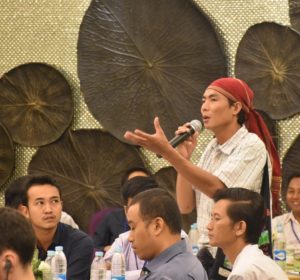
In Burma, USAID’s Land Tenure Project (LTP) hosted its third annual Participatory Mapping Symposium in partnership with OneMap Myanmar and Land Core Group. The event convened 117 participants from across 46 organizations, including civil society organizations, non-governmental organizations, and government. Participants engaged in active discussion about the value of bottom up participatory mapping approaches to address land issues in Burma. LTP partners shared their experiences of using mapping to engage local authorities and communities to raise legal awareness around land and address community land-related concerns. The symposium identified next steps for strengthening a community of practice for participatory mapping and engaged participants in preliminary discussions about harmonizing mapping approaches in order to gain recognition and buy-in from the Government of Burma.
A member of the LTP team commented, “During first and second participatory mapping symposiums, CSOs could not involve [sic] much during the discussion of technical mapping activities and only technical people from NGOs/ INGOs gave presentations and led the discussions. Mostly, those CSOs are activists for policy advocates. But interestingly, this year, [at the] third mapping symposium, LTP CSO partners gave presentations in each thematic group and shared their experiences, good practices and lesson learned during their participatory mapping work. They seem quite confident and enthused to share their work and experiences to other CSOs.”
Participatory mapping is a community-driven approach used internationally to document and recognize legitimate land tenure claims. In Burma, participatory mapping efforts are at an early stage, but are proving to be an important tool for addressing community perspectives on land-related concerns and for strengthening engagement between communities and local authorities. There were 65% more participants at this year’s symposium compared with last year’s, signaling growing interest in participatory mapping in Burma.

